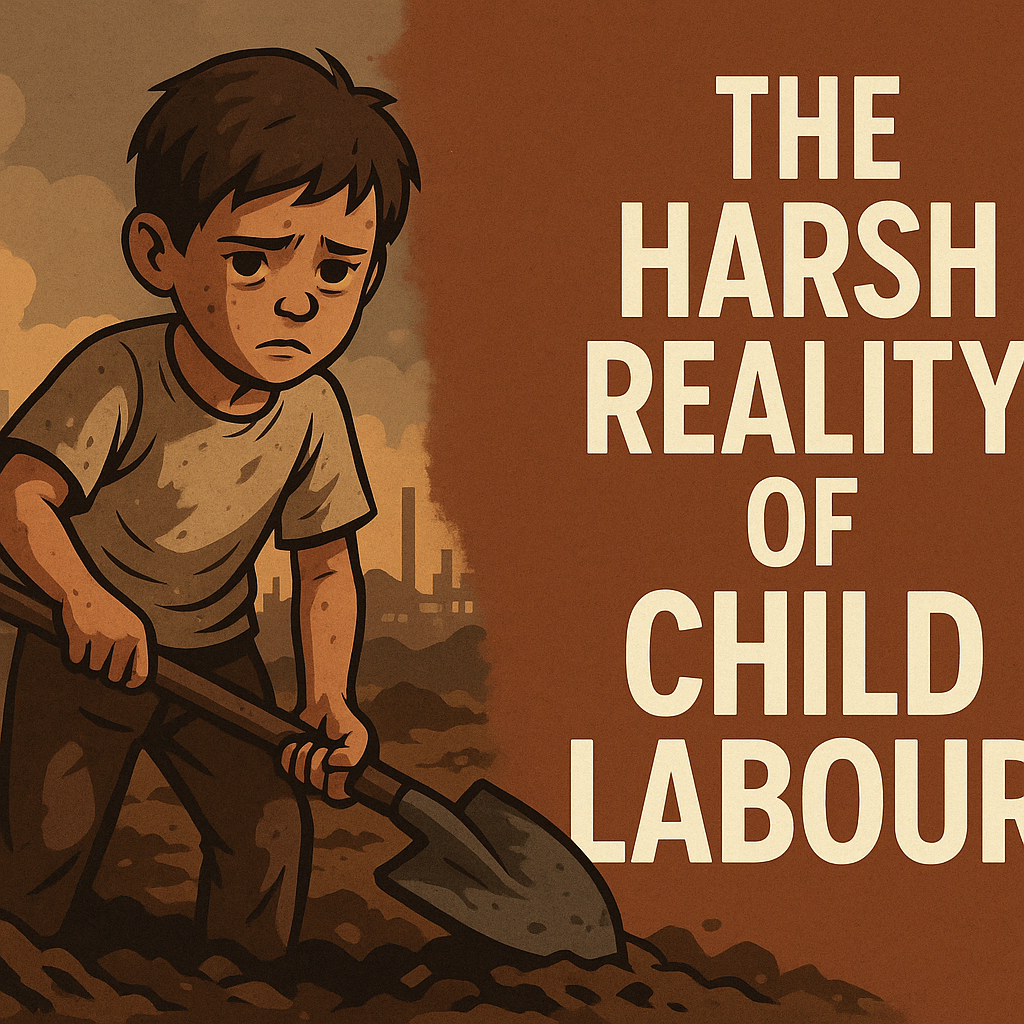The Harsh Reality of Child Labour
Child labour is one of the most heartbreaking issues faced by societies around the world. Millions of children are forced to work in dangerous and unfair conditions, robbed of their childhood, education, and rights. Here’s a deep dive into this serious problem, its consequences, and what is done to combat it.
- 👶⚒️What Is Child Labour?
Child labour means children under the legal working age engaged in work that harms their health, education, or development. - 🌍How Many Children Are Affected?
According to global estimates, over 160 million children worldwide are involved in child labour. - 🏭🚜Common Types of Child Labour
- Factory work
- Agriculture and farming
- Domestic work
- Mining and construction
- Street vending and begging
- 💸Why Do Children Work?
- Extreme poverty in families
- Lack of access to education
- Social and cultural acceptance
- Family pressure to contribute income
- 🚑Consequences on Physical Health
Exposure to harmful chemicals, long hours causing fatigue and injuries, malnutrition and stunted growth. - 😞🧠Mental and Emotional Impact
Stress, anxiety, depression, lack of childhood joy and play, emotional trauma and isolation. - 📚🚫Education Deprivation
Child labourers often drop out or never attend school, limiting future opportunities. - 🔄Perpetuating Poverty Cycle
Without education or skills, child labourers remain poor adults, continuing the poverty cycle. - 🚨🚷Are Children Sold or Trafficked?
- In some cases, children are trafficked for labour.
- Child trafficking involves illegal selling or transferring children for exploitation.
- Not all child labour involves selling; many work due to economic necessity.
- 📝⚖️Legal Protections and Laws
Many countries have laws setting minimum working ages. International laws, like those from the ILO, ban hazardous child labour. - ⚠️Challenges in Enforcement
Weak law enforcement allows child labour to continue. Corruption and lack of resources hinder legal action. - 👪Role of Families
Families may rely on children’s income to survive. Awareness programs are needed to change attitudes. - 💰Economic Impact
Child labour reduces adult employment and hurts the economy by limiting skilled workforce development. - 🚻Gender Dimension
Girls often face worse conditions, including domestic work and abuse. They are more vulnerable to exploitation and trafficking. - 🔗Child Labour and Slavery
Some child labour practices resemble modern slavery, where children are forced to work without pay or freedom. - 🤝🌐Government and NGO Efforts
- Rescue and rehabilitation programs
- Education and scholarship schemes
- Awareness and advocacy campaigns
- 🎓📖Importance of Education
Education is the strongest tool to prevent child labour and empower children for a better future. - 🌍🛒Role of Society and Consumers
Consumers can support fair trade and ethical products. Society must demand stricter enforcement and child protection. - 💡📱Technology and Innovation
New technologies help monitor child labour practices and spread awareness faster. - 🙌❤️How You Can Help
Support organizations fighting child labour, promote education in your community, and raise awareness about the issue.
Final Thoughts
Child labour is a complex and painful issue that demands urgent attention. Every child deserves the right to learn, play, and grow in a safe environment free from exploitation. By understanding the harsh realities and working together, we can build a future where no child has to suffer through child labour.
